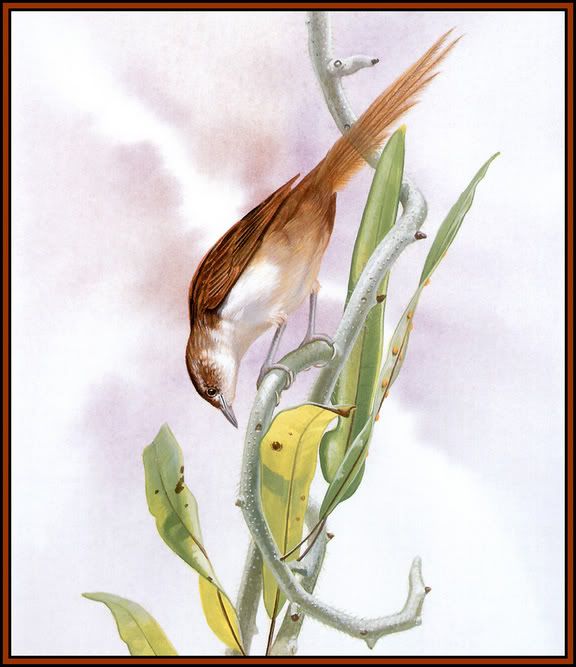Post by Melly on Mar 12, 2005 14:40:20 GMT
East of New Zealand is the Chatham Group of islands where a distinct species of Old World Warbler was discovered by Charles Traill in 1868. This was the Chatham Island Fernbird (Bowdleria rufescens). On Mangare Island, Traill spotted a small bird in the grass and stunted vegetation and knocked it down with a stone. It was forwarded to the New Zealand ornithologist, W. L. Buller, who described it as a new species.
Our only eye-witness account of the fernbird comes from the collector, H. H. Travers, who found it, in 1871, quite common on the small, steep Managre Island but much reduced on Pitt: `Its peculiar habit of hopping rapidly from one point of concealment to another renders it difficult to secure. It has a peculiar whistle, very like that which a man would use in order to attract the attention of another at some distance . . . It is solitary in its habits and appears to live exclusively on insects.'
W. R. B. Oliver summarized the birds' decline: `Through burning and the introduction of cats on Pitt Island, and collectors on Mangare, the Chatham Island Fernbird became extinct about 25 years after its discovery.' The last specimen taken was shot by one of Lord Rothschild's collectors after a climb along the precipice of northern Mangare Island, and hopes that some birds might survive up there, unmolested by cats, have proved unfounded.
This fernbird was distinguished from other forms by the virtual absence of spots on its underparts, and by its bright rufous upper surface. It was also reported several times to have produced partalbinos. In 1896 another collector, W. Hawkins, wrote: `The Fern-bird is extinct. I spent a fortnight on the island where they used to be, but never saw any sign whatever of them.'
Our only eye-witness account of the fernbird comes from the collector, H. H. Travers, who found it, in 1871, quite common on the small, steep Managre Island but much reduced on Pitt: `Its peculiar habit of hopping rapidly from one point of concealment to another renders it difficult to secure. It has a peculiar whistle, very like that which a man would use in order to attract the attention of another at some distance . . . It is solitary in its habits and appears to live exclusively on insects.'
W. R. B. Oliver summarized the birds' decline: `Through burning and the introduction of cats on Pitt Island, and collectors on Mangare, the Chatham Island Fernbird became extinct about 25 years after its discovery.' The last specimen taken was shot by one of Lord Rothschild's collectors after a climb along the precipice of northern Mangare Island, and hopes that some birds might survive up there, unmolested by cats, have proved unfounded.
This fernbird was distinguished from other forms by the virtual absence of spots on its underparts, and by its bright rufous upper surface. It was also reported several times to have produced partalbinos. In 1896 another collector, W. Hawkins, wrote: `The Fern-bird is extinct. I spent a fortnight on the island where they used to be, but never saw any sign whatever of them.'






